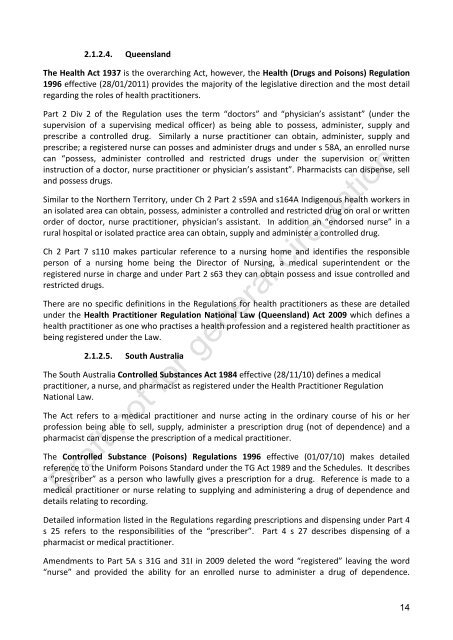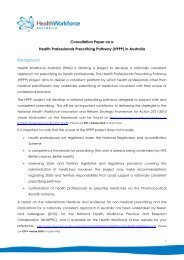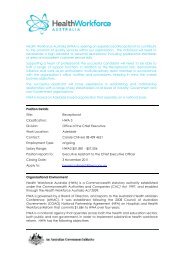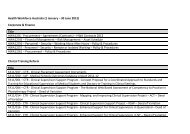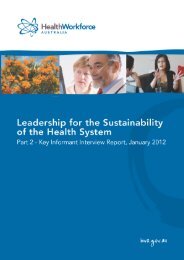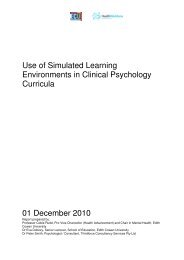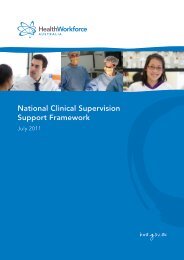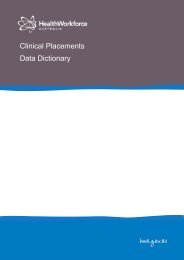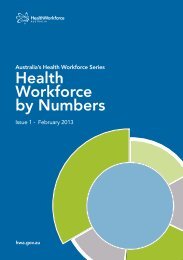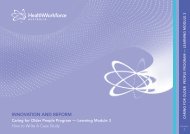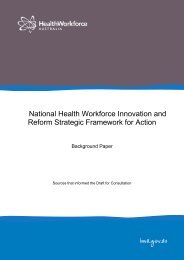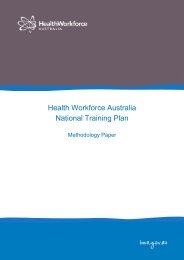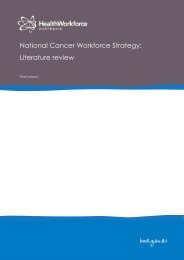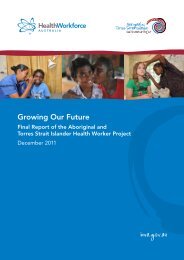SUMMARY - Safe Medications Management project: Key issues and ...
SUMMARY - Safe Medications Management project: Key issues and ...
SUMMARY - Safe Medications Management project: Key issues and ...
Create successful ePaper yourself
Turn your PDF publications into a flip-book with our unique Google optimized e-Paper software.
2.1.2.4. Queensl<strong>and</strong>The Health Act 1937 is the overarching Act, however, the Health (Drugs <strong>and</strong> Poisons) Regulation1996 effective (28/01/2011) provides the majority of the legislative direction <strong>and</strong> the most detailregarding the roles of health practitioners.Part 2 Div 2 of the Regulation uses the term “doctors” <strong>and</strong> “physician’s assistant” (under thesupervision of a supervising medical officer) as being able to possess, administer, supply <strong>and</strong>prescribe a controlled drug. Similarly a nurse practitioner can obtain, administer, supply <strong>and</strong>prescribe; a registered nurse can posses <strong>and</strong> administer drugs <strong>and</strong> under s 58A, an enrolled nursecan “possess, administer controlled <strong>and</strong> restricted drugs under the supervision or writteninstruction of a doctor, nurse practitioner or physician’s assistant”. Pharmacists can dispense, sell<strong>and</strong> possess drugs.Similar to the Northern Territory, under Ch 2 Part 2 s59A <strong>and</strong> s164A Indigenous health workers inan isolated area can obtain, possess, administer a controlled <strong>and</strong> restricted drug on oral or writtenorder of doctor, nurse practitioner, physician’s assistant. In addition an “endorsed nurse” in arural hospital or isolated practice area can obtain, supply <strong>and</strong> administer a controlled drug.Ch 2 Part 7 s110 makes particular reference to a nursing home <strong>and</strong> identifies the responsibleperson of a nursing home being the Director of Nursing, a medical superintendent or theregistered nurse in charge <strong>and</strong> under Part 2 s63 they can obtain possess <strong>and</strong> issue controlled <strong>and</strong>restricted drugs.There are no specific definitions in the Regulations for health practitioners as these are detailedunder the Health Practitioner Regulation National Law (Queensl<strong>and</strong>) Act 2009 which defines ahealth practitioner as one who practises a health profession <strong>and</strong> a registered health practitioner asbeing registered under the Law.2.1.2.5. South AustraliaThe South Australia Controlled Substances Act 1984 effective (28/11/10) defines a medicalpractitioner, a nurse, <strong>and</strong> pharmacist as registered under the Health Practitioner RegulationNational Law.The Act refers to a medical practitioner <strong>and</strong> nurse acting in the ordinary course of his or herprofession being able to sell, supply, administer a prescription drug (not of dependence) <strong>and</strong> apharmacist can dispense the prescription of a medical practitioner.The Controlled Substance (Poisons) Regulations 1996 effective (01/07/10) makes detailedreference to the Uniform Poisons St<strong>and</strong>ard under the TG Act 1989 <strong>and</strong> the Schedules. It describesa “prescriber” as a person who lawfully gives a prescription for a drug. Reference is made to amedical practitioner or nurse relating to supplying <strong>and</strong> administering a drug of dependence <strong>and</strong>details relating to recording.Detailed information listed in the Regulations regarding prescriptions <strong>and</strong> dispensing under Part 4s 25 refers to the responsibilities of the “prescriber”. Part 4 s 27 describes dispensing of apharmacist or medical practitioner.Amendments to Part 5A s 31G <strong>and</strong> 31I in 2009 deleted the word “registered” leaving the word“nurse” <strong>and</strong> provided the ability for an enrolled nurse to administer a drug of dependence.14


